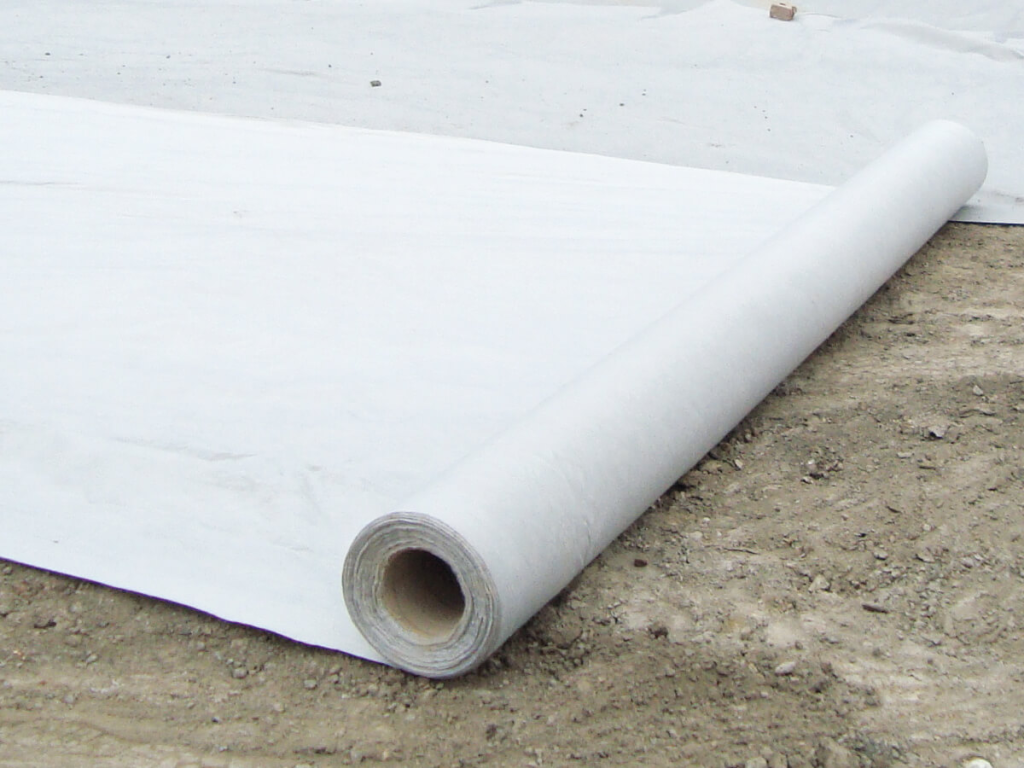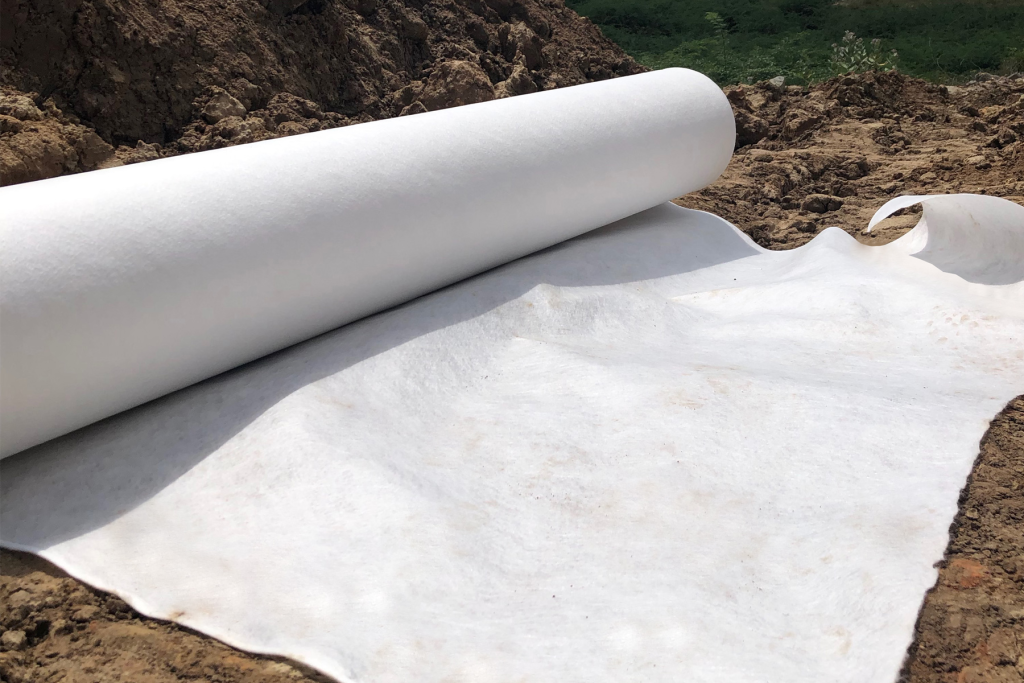Introduction
Geotextile fabric is a versatile material widely used in construction and engineering projects due to its significant benefits, including reinforcement, filtration, and erosion control. Proper installation is critical to ensure the geotextile performs its intended functions, such as preventing seepage or reinforcing weak soils. Incorrect installation can lead to serious consequences, such as structural collapse or waterlogging. This guide aims to provide a clear and comprehensive process for laying geotextile fabric, ensuring efficient project execution.

Preparation Before Laying Geotextile Fabric
Selecting the Right Geotextile Fabric
Choosing the appropriate geotextile fabric is crucial for the success of your project. Different applications require specific types of geotextiles, such as non-woven fabrics for drainage and filtration or woven fabrics for soil stabilization. Environmental factors like UV resistance, tensile strength, and durability must also be considered when selecting the material. For projects requiring high-quality materials at affordable prices, sourcing from the best geotextile factory ensures reliability and cost-effectiveness.
Site Inspection and Preparation
Before starting, conduct a thorough site inspection to ensure it is ready for geotextile installation. Remove any debris, such as rocks, roots, or sharp objects, to create a smooth surface. Ensure the area is dry and free from standing water or muddy patches, as these can compromise the geotextile’s effectiveness.
Tools and Materials
Prepare all necessary tools and materials in advance to avoid delays. Essential items include:
A measuring tape for marking the layout
Scissors or a cutter for trimming the fabric
Nails, pins, or sandbags for securing the edges
Plan transportation and storage of the geotextile fabric to prevent contamination or damage. Wholesale geotextile suppliers often provide practical storage solutions to maintain product integrity.
Step-by-Step Process for Laying Geotextile Fabric
Overview of the Installation Process
The installation process consists of preparation, precise measurements, laying the geotextile, securing it, and final checks. Following these steps ensures proper functionality and long-term performance.
Step 1: Measurement and Marking
Start by measuring the project area using a tape measure. Mark the edges and boundaries of the area where the geotextile fabric will be laid. This step ensures accurate placement and minimizes material waste.
Step 2: Laying the Geotextile Fabric
Roll out the geotextile fabric in the designated area, ensuring it remains flat and wrinkle-free. Pay attention to wind direction and weather conditions to avoid disruptions during installation. Proper handling reduces the chances of tears or misalignments.
Step 3: Overlapping and Securing
To maintain continuity and strength, overlap adjacent sections of fabric by 20-30 cm. Secure the overlaps and edges using nails, pins, or sandbags. For larger projects, additional reinforcement can be applied at stress points. Wholesale geotextile materials often include guidelines for optimal overlap and fixing techniques.
Step 4: Inspection and Adjustment
Inspect the entire laid-out fabric to identify and fix any loose edges, gaps, or damaged sections. Properly securing all parts ensures the geotextile performs as intended, preventing seepage or displacement under load.
Key Considerations During Installation
Avoid Common Mistakes
Improper handling can compromise the geotextile’s performance. Avoid errors such as reversing the fabric, insufficient overlap, or neglecting edge fixing. Always refer to guidelines provided by the best geotextile factory for optimal practices.
Weather Impacts
Adverse weather can delay installation. Strong winds may shift the fabric, and rain can create muddy conditions. Plan installations during favorable weather and take preventive measures like using weights to hold the fabric in place temporarily.
Troubleshooting
If issues arise, such as rips or bulges, address them immediately. Minor tears can often be patched with additional fabric, while uneven surfaces should be leveled to prevent long-term problems.
Common Applications of Geotextile Fabric
Road Construction
In road building, geotextile fabric plays a key role in soil stabilization and base reinforcement. It prevents the mixing of aggregate layers with the subsoil, ensuring a longer-lasting foundation.
Water Management Projects
Geotextiles are vital in water retention and drainage systems. For example, they act as a filter in dam construction to prevent soil erosion while allowing water to pass through.
Landscaping and Gardening
In landscaping, geotextile fabric is used as a barrier to inhibit weed growth while allowing water and nutrients to reach the soil. For cost-effective solutions, consider working with wholesale geotextile suppliers for landscaping projects.
Conclusion
Properly installing geotextile fabric is essential for the success of various construction and landscaping projects. By following the outlined steps—preparing the site, carefully measuring, laying, and securing the material—you can ensure long-lasting results and project efficiency.
As a trusted manufacturer, we provide high-quality geotextile fabric tailored to your needs. For reliable products and expert advice, sourcing from the best geotextile factory guarantees project success. By consulting professionals and adhering to these guidelines, you can achieve optimal outcomes for your engineering or landscaping projects.
